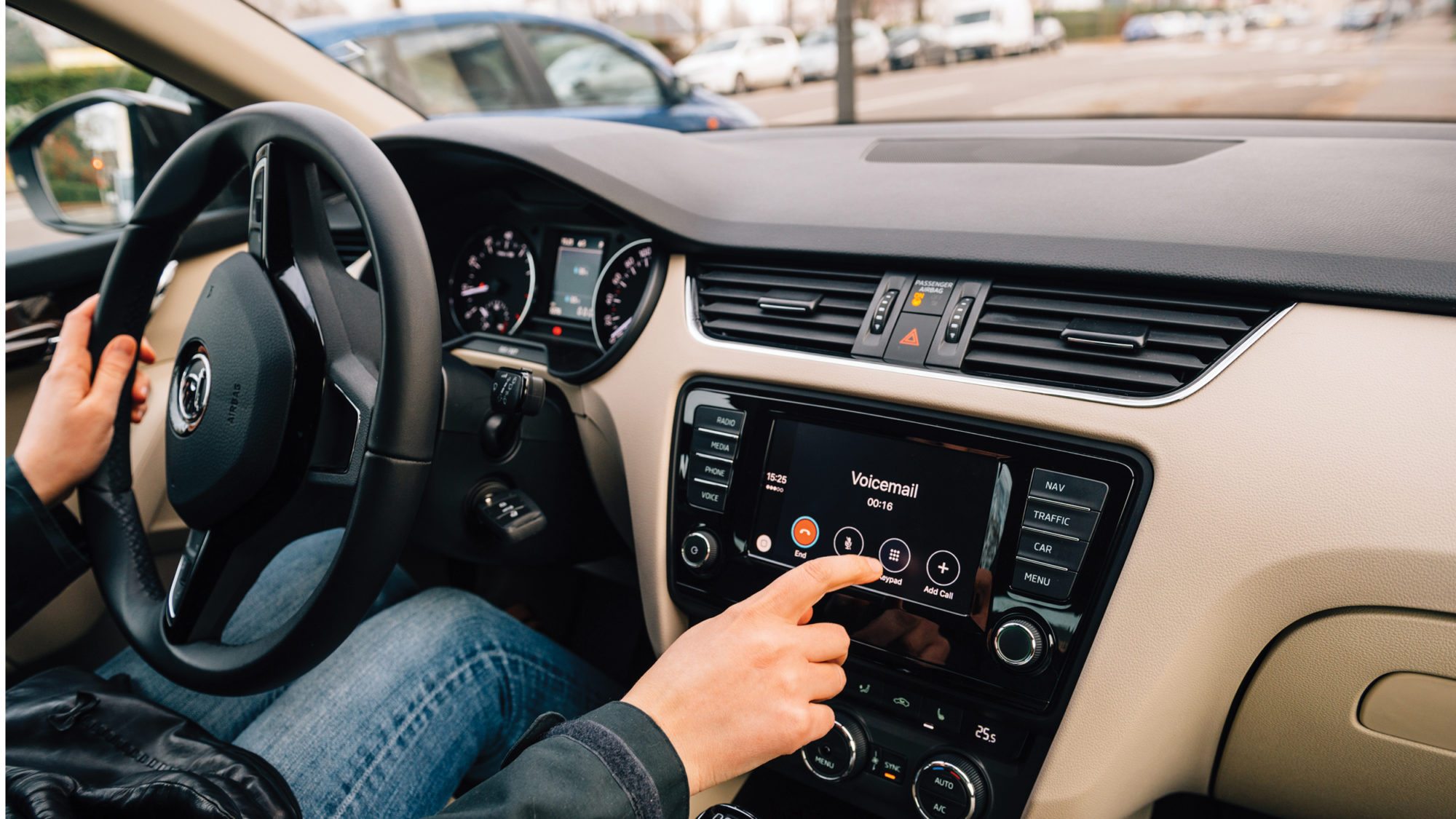Almost all new cars now feature dashboard consoles that allow us to make calls, send texts, control music, navigate and more. They might make life easier, but giving drivers more ways to engage in non-driving activities—even hands-free—can impact their ability to safely operate a vehicle.
“We can’t assume that technology, even hands-free technology, is risk-free. There’s a cost associated with it,” says Dr. David Strayer, cognitive psychologist and director of the Center for the Prevention of Distracted Driving at the University of Utah. Strayer recently led an AAA-funded study that looked at the visual and mental demands placed on drivers as they completed tasks using in-vehicle infotainment systems (IVIS).
The tasks, conducted in 30 different 2017 vehicles, included managing audio entertainment, placing calls, receiving and sending text messages, and navigating. Regardless of car or computer system, each activity had an impact on drivers’ mental workload, taking their attention away from the road.
This “inattentional blindness” not only increased with IVIS use, but there was also a carryover period between performing a task and reacquiring full awareness of the road.
Drivers also found some vehicle systems more cumbersome to use than others. The worst offenders caused frustration and thus even greater distraction. Every system imposed at least a moderate—and in some cases up to a very high—demand on drivers’ attention. None were low-demand.
Auto manufacturers appear to recognize that some tasks, even if performed hands-free, can’t be safely done while driving. “A lot of times you’ll get a pop-up message saying, ‘It’s not safe to use this feature while the vehicle is moving’,” Strayer says. But in most cases you don’t have to be parked for the functionality to become available; it works as soon as you come to a stoplight. If you send a message while waiting at an intersection, you’ll still be distracted when that light turns green.
MORE TO READ
Why hands-free isn’t risk-free when it comes to distracted driving
So how can dashboard computers be used safely? Car buyers should look at how a vehicle’s IVIS works while at the dealership, then spend some time gaining familiarity with it at home. And of course, only use the system before you leave or once you reach your destination. “We can all avoid distractions behind the wheel just by making that decision ourselves,” says Jeff Kasbrick, vice-president of government and stakeholder relations for AMA. “Your safety and that of everyone else around you relies on it.”
With ever-flashier features appearing on the dashboards of new cars, Strayer hopes manufacturers will start to give greater thought to which infotainment-system functions should—rather than could—be usable when a car is moving. For now, it’s up to drivers to proceed with caution and use them wisely.
THE ESSENTIALS
Key takeaways from Dr. Strayer’s infotainment-system study
• According to the study, an average of 40 seconds are needed to enter an address into a GPS. That’s a serious distraction! So be sure to input coordinates before you hit the road.
• Make use of an infotainment system and the “carryover” distraction can last up to 27 seconds. In that amount of time, driving at just 40 km/h, you’ll still cover the length of four football fields.
• Inattentional blindness means you’re looking, but not seeing. There might be a pedestrian crossing the road within your field of vision, but a distracted brain may not process her presence.
